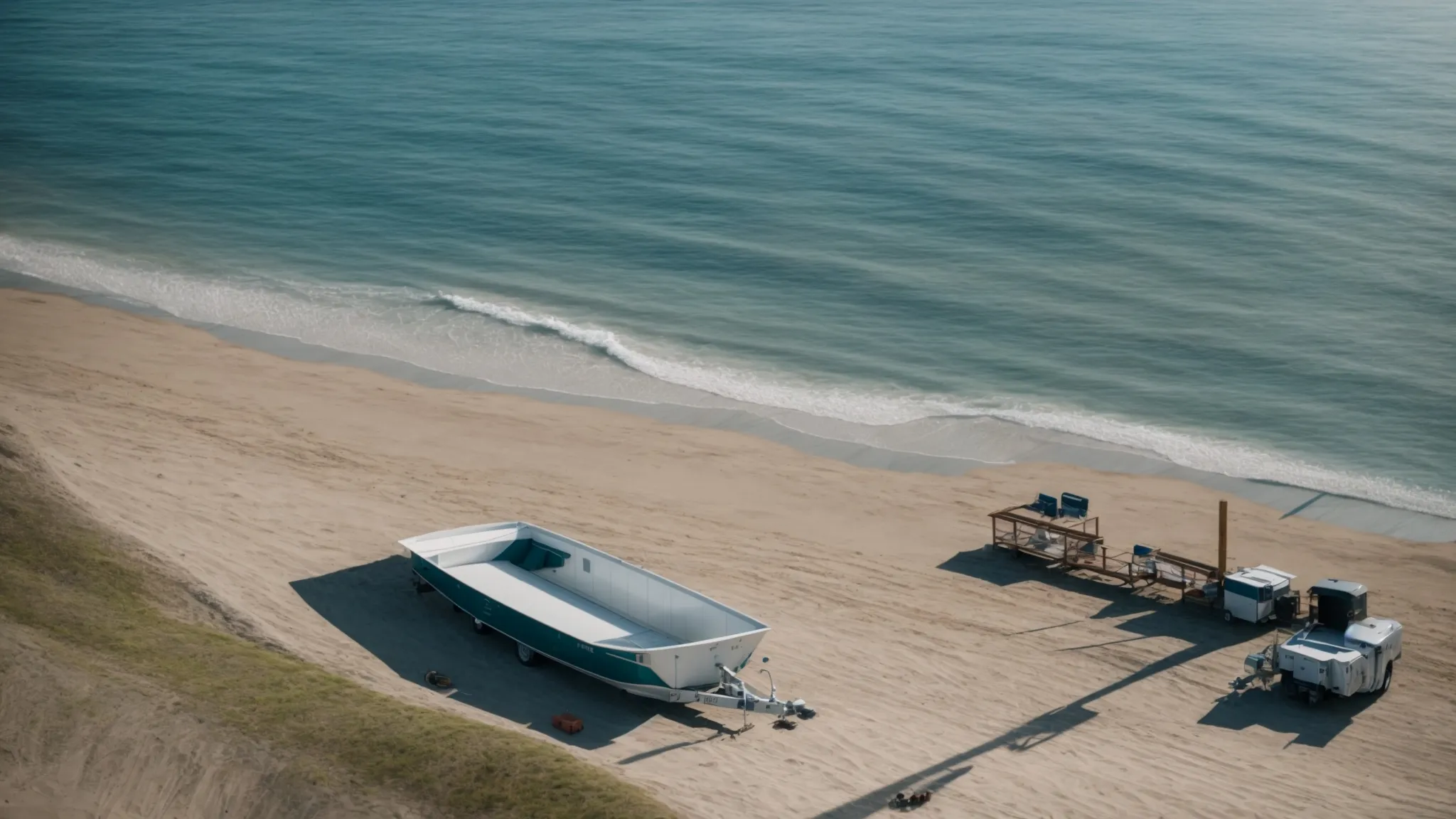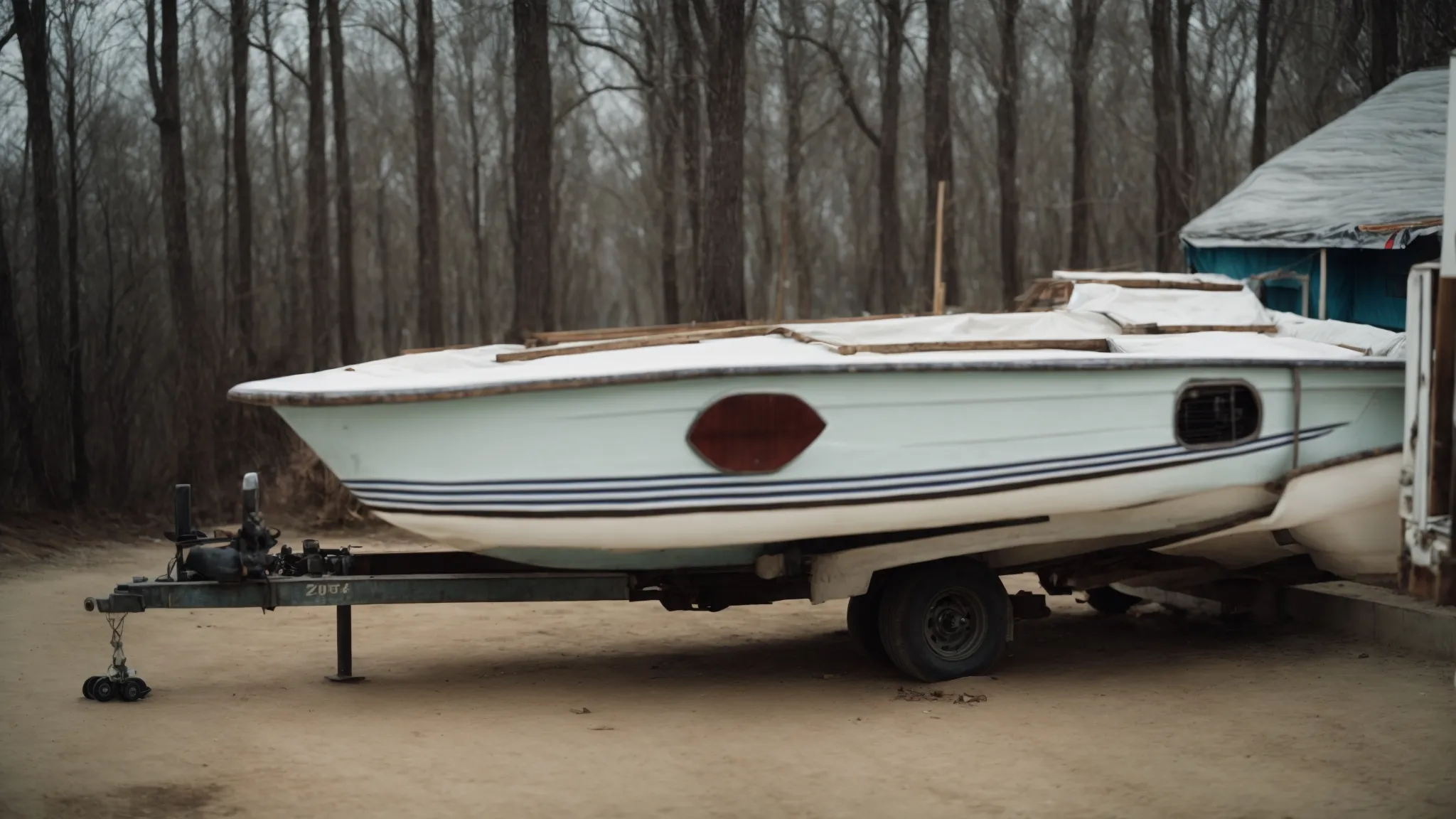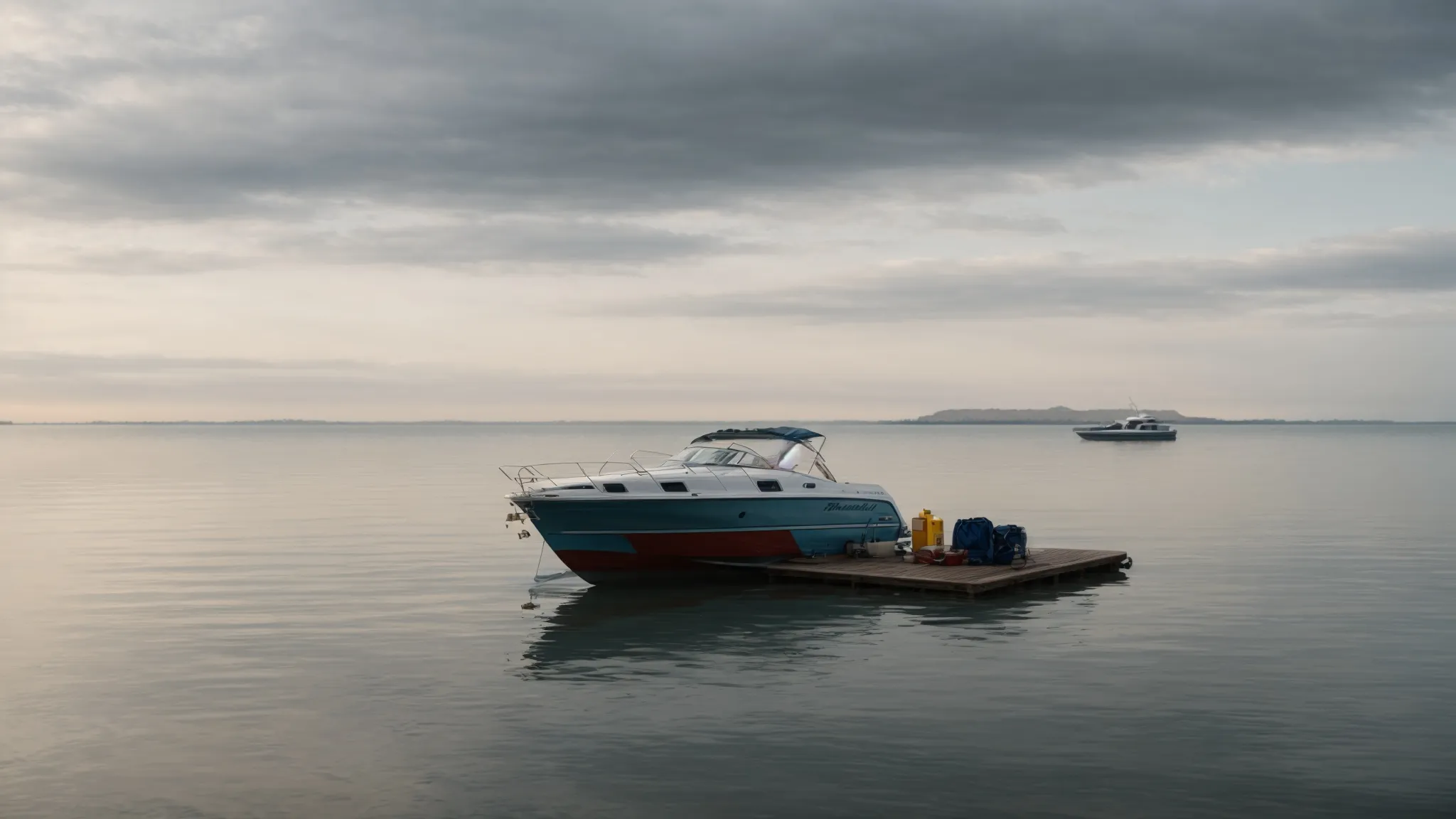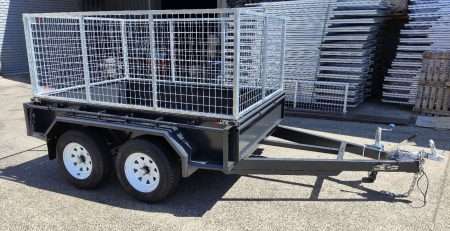
High-Quality Boat Trailer Tyres for Smooth Sailing
Boat Trailer Tyres: Maintenance Tips & Replacement Advice
Navigating the waters of boat trailer maintenance, the health of your tyres stands as a lighthouse, guiding the overall safety and longevity of your journey.
Much like the seasoned sailor who knows the signs of an impending storm, understanding when it’s time to replace your boat trailer tyres can save you a sea of trouble down the road.
From the whisper of wear and tear to the roar of an unexpected flat, the condition of your tyres is your first line of defense in ensuring your aquatic adventures remain smooth sailing.
As we anchor into this topic, keep reading to discover practical tips on recognizing the need for replacement, the steps to change your boat trailer tyres efficiently, and how to select the right tyres to keep your trailer cruising confidently on the road less traveled.
Key Takeaways
- Regular Visual Inspections of Boat Trailer Tyres Are Crucial for Safety and Longevity
- Understanding Tyre Aging Can Prevent Potential Safety Hazards, Regardless of Appearance
- Proper Tyre Selection Aligned With Trailer Type and Load Capacity Optimizes Performance and Safety
- Recognizing Early Warning Signs of Tyre Failure Is Critical to Maintaining Reliability
- Deciphering Tyre Specifications Ensures the Right Fit for Boat Trailer Wheels and Enhances Journey Smoothness
Recognizing When to Replace Your Boat Trailer Tyres

Embarking on a journey across the azure waters, the condition of our boat trailer tyres often whispers the tales of our adventures, yet, it’s a chapter we might neglect until the whispers become warnings.
Identifying the opportune moment for a tyre replacement marries both an art and a science—a delicate dance of observation and understanding.
Peering at the physical testament of wear and damage stands as the initial step in this ballet, where each crack, bulge, or sign of uneven wear tells a story of past voyages and potential peril.
Yet, the chronicle doesn’t end with what meets the eye; delving into the age of our tyres offers a profound insight into their resilience and reliability.
The age-old adage of ‘safety first’ rings especially true here, guiding us through these considerations with the gravity they deserve.
Let us navigate through these waters, armed with knowledge and discernment, to ensure our boat trailer tyres are not merely components of our journeys but steadfast companions.
Check for Visible Signs of Wear and Damage
Embarking on this expedition, my gaze often lingers on the boat trailer tyres, scrutinizing the silent but evident tales of usage and time. Visible signs of wear and damage are like the first faint whispers of an impending story, hinting at adventures experienced and signaling when the narrative might need a change. Every crack, bulge, and pattern of uneven wear on those boat trailer wheels echoes a journey undertaken, perhaps a rough trail conquered or a tumultuous path navigated, adding layers to this complex tale of mobility and endurance.
Just like the vigilant sailor who reads the sea’s mood in its waves, assessing these visual signs requires a keen eye. A thorough inspection reveals not just the resilience faced against the gritty reality of asphalt and dirt but also unveils when the crescendo of their service reaches its finale. The narrative of boat trailer tyres, from their robust tread grooves to the resilient rubber compound, mirrors a saga of relentless pursuit, and recognizing these signs of wear and damage is pivotal in ensuring that the tale does not turn into a cautionary echo of neglect.
Understand Tire Age and Its Impact on Safety
The unseen enemy of safety on our journeys may very well be the age of our boat trailer tyres. Even the most unscarred, pristine-looking tyre can harbor secrets beneath its surface, secrets that time alone has whispered to its core structure, potentially compromising its integrity and, consequently, our safety. It’s a silent battle against time, one that requires not just observation but understanding, as the age of a tyre directly influences its reliability and performance, regardless of its outward appearance.
Underpinning this truth is the knowledge that tyre rubber degrades over time, a degradation that’s stealthy yet inexorable. This natural aging process, accelerated by exposure to the elements—sunlight, heat, and coastal air—subtly but surely diminishes the tyre’s ability to stand firm against the demands of the road. Understanding this, the age of our boat trailer wheels and tyres transcends simple numbers; it becomes a barometer of safety, guiding us in recognizing when the curtain must fall on their service and a new chapter must begin, ensuring the continuance of our adventures with unwavering trust and safety.
Now that we’ve unveiled the mystery of recognizing worn boat trailer tyres, let’s embark on an exciting journey of empowerment. Prepare to roll up your sleeves and dive into the step-by-step guide to changing a boat trailer tyre, where you’ll morph from novice to expert in no time!
Step-by-Step Guide to Changing a Boat Trailer Tyre

Transitioning to the practical side of maintaining boat trailer wheels and tyres, let’s embark on the methodical steps required for a tyre change—a necessary skill for any trailer owner.
The process, akin to preparing for a voyage, starts with elevating and securing the trailer, ensuring it remains steadfast during our endeavors.
Equally important is removing the old tyre, a task that, while straightforward, demands a certain finesse and understanding.
This guide aims to navigate through these procedures seamlessly, ensuring that replacing a boat trailer tyre is not just a task, but a mastered skill ensuring safety and longevity in our journeys across the roads less traveled.
Safely Lifting and Stabilizing Your Trailer
Embarking on the task of changing a boat trailer tyre begins with the essential step of lifting and stabilizing the trailer: a foundational move that sets the stage for everything that follows. Utilizing a jack specifically designed for trailer use, I position it carefully under the trailer’s designated lift point, ensuring it’s on solid and level ground to avoid any shifts or slips during the process.
| Step | Action | Importance |
|---|---|---|
| 1 | Position jack under lift point | Ensures stability and safety |
| 2 | Lift trailer steadily | Maintains balance, avoids damage |
| 3 | Secure with jack stands | Prevents trailer from falling |
Once the trailer is lifted, the next critical step is securing it with jack stands. I place these stands under the frame or axle (whichever is recommended for your trailer model) to ensure the trailer remains securely elevated throughout the tyre replacement process. This not only safeguards the trailer but also provides me, the person executing the task, with peace of mind and safety during the operation.
Removing the Old Tyre Efficiently
Removing the old tyre from the boat trailer is like unshackling the past to pave the way for new journeys. With the trailer securely propped up, I proceed to loosen the lug nuts with a wrench, turning counterclockwise with steady force. This action requires a blend of strength and finesse, ensuring each nut breaks free without causing strain to the wheel studs or damaging the alloys of boat trailer wheels.
After successfully loosening the lug nuts, I gently slide the old tyre off its moorings, setting it aside with respect for the miles it has carried. This moment feels symbolic, like an old sailor stepping down to let the younger, spryer crew take over. Replacing it with a new tyre isn’t just about ensuring our safety; it’s an act that rejuvenates the spirit of our adventures on the water, giving us confidence in our vessel’s reliability beneath the sun’s glare or in the embrace of a misty dawn.
Mastering the art of changing a boat trailer tyre is just the beginning. Let’s journey deeper, exploring why regular tyre inspections are the cornerstone of safety on the open road.
The Importance of Regular Tyre Inspections for Safety

Embracing the role of captain over my aquatic escapades means not just steering through the serenity of open waters but also ensuring the steadfast condition of my vessel, right down to the tyres of its trailer.
Among the myriad responsibilities that come with boating, regular tyre inspections emerge as critical, non-negotiable rituals for safety.
This dedication to diligence involves not merely a cursory glance but a scheduled monthly deep dive into the state of each tyre, identifying early warning signs of wear or damage that could herald tyre failure.
It’s a proactive stance, ensuring that every journey begins and ends with the assurance of safety, with the integrity of my boat trailer tyres as my first line of defense against the unpredictable.
Schedule Monthly Visual Checks
Marking the calendar for monthly visual checks of my boat trailer tyres has become as routine as charting a course before setting sail. This scheduled vigilance allows me to spot any early signs of wear or distress, ensuring that no journey is marred by the unexpected. It’s a simple yet crucial practice, akin to checking the weather before embarking on the open sea.
During these inspections, I take my time to examine each tyre closely, seeking out any signs that might whisper of the need for a closer look or immediate action. It’s not just about ensuring the longevity of the tyres but safeguarding my adventures on the water. This regular commitment fortifies my confidence in every journey, much like the steadfast lighthouse that guides vessels home.
Identifying Early Warning Signs of Tyre Failure
On my routine quests to ensure the safety and longevity of my boat trailer tyres, discerning the early warning signs of tyre failure emerges as a cornerstone of vigilance. The first harbinger often manifests as a subtle but palpable disfigurement on the tyre—a bulge or blister on the sidewall—serving as a clarion call to action. This deformation is not mere aesthetics; it signals a weakening in the tyre structure, a precursor to potential failure that demands immediate attention.
Another indicator that whispers of the need for a closer examination is a persistent loss of air pressure, distinct from the natural ebb and flow caused by temperature fluctuations. This symptom, albeit silent, tells a tale of possible internal damage or puncture stealthily compromising the tyre’s integrity. Ignoring such signs is akin to sailing into a storm unprepared; hence, I treat them with the urgency and respect they command, ensuring my journey remains on a course of safety and reliability.
Shifting gears from the realm of routine inspections, we embark on an equally thrilling voyage: choosing the perfect tyres for your boat trailer. Strap in, as we navigate the sea of options to find your trailer’s true match.
Selecting the Right Tyres for Your Boat Trailer

Choosing the right tyres for your boat trailer is akin to selecting the perfect pair of shoes for a marathon; it demands precision, understanding, and a match to the journey ahead.
This next chapter of our guide focuses on the crucial steps of matching tyres to your trailer’s specific type and load capacity, as well as deciphering the hieroglyphics of tyre dimension numbers.
These aspects are not just minor details but the cornerstone of optimizing performance and safety.
Understanding these factors ensures that your boat trailer is equipped with tyres that not only carry the load but also withstand the trials of both tranquil and treacherous paths.
Matching Tyres to Trailer Type and Load Capacity
Embarking on the quest to enhance my boat trailer’s performance and safety, I’ve learned the importance of aligning tyre selection with the trailer type and its designated load capacity. It’s a nuanced decision, akin to choosing the right sails for a specific voyage, where the harmony between the trailer’s build and the tyre’s capacity dictates the smoothness of the journey.
I realized that each trailer, whether it’s a simple flatbed for serene lake excursions or a heavy-duty model designed for the ruggedness of ocean adventures, demands a specific type of tyre. This bespoke approach ensures not only the longevity of the tyres but also safeguards the precious cargo they bear, be it a cherished vessel or valuable equipment. Paying attention to the load rating of tyres became my compass in navigating the vast seas of options, guiding me to choices that promise reliability and peace of mind.
Understanding Tyre Dimension Numbers
Deciphering the enigmatic sequences of numbers and letters stamped onto the sidewall of tyres is akin to interpreting an ancient script, guiding me to make an informed choice. These markings are not mere embellishments but disclose vital specifications—such as width, aspect ratio, and diameter—that are crucial for matching the tyre to my boat trailer’s needs.
Each number holds the key to ensuring the alloy trailer wheels beneath my vessel are perfectly suited to bear its weight and tread any path I choose to venture on. Realizing the importance of these dimensions has transformed the way I view tyre selection, embedding a sense of responsibility towards ensuring harmony between my boat trailer’s specifications and its tyres’ capabilities.
Conclusion
Maintaining and replacing boat trailer tyres is essential for safe and reliable adventures on the water.
Regular inspections help identify visible signs of wear and damage, while understanding tyre age ensures that seemingly pristine tyres do not compromise safety due to underlying degradation.
Mastering the steps for efficient tyre replacement empowers trailer owners to act proactively, ensuring their vessel remains a steadfast companion on their journeys.
Additionally, selecting the right tyres, aligned with the trailer type and load capacity, alongside comprehending tyre dimensions, optimizes performance and safety.
Ultimately, diligent maintenance, timely replacement, and informed selection of boat trailer tyres safeguard the continuity of adventures on the water, ensuring that every journey begins and ends with the assurance of safety and the integrity of your setup.
Author

How to Mount a Spare Tire on Your Trailer: A Simple Step-by-Step Guide
Trailer service centers receive over 1 million phone calls and 1.3 million emails each year about trailer maintenance problems....

How to Fix RV Roof Leaks: Simple Roof Leak Detection Guide for Beginners
Did you know DIY RV roof repairs can cost under $50? But undetected leaks could lead to substantially higher repair...

Starting a Food Truck Business in Australia: From Trailer Selection to Launch
The Australian mobile food market has evolved into a billion-dollar industry. This makes a food truck...
